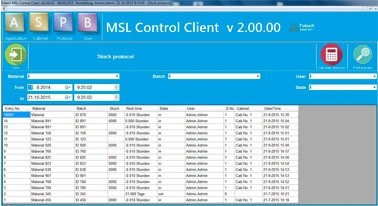Totech MSL 2.0 Software: In Pursuit of 4.0
Industry 4.0 changes the rules of the game for manufacturing. It holds great promise for significant increases in productivity by connecting machines with information technologies and the Internet.
Companies that use new technologies for Industry 4.0 are more competitive because they produce at lower costs and possess the flexibility to meet wide ranging and quickly changing customer requirements. Industry 4.0 is upon us, and those that are prepared to implement it now will actively shape and lead the change.
Mass customization is a marketing and manufacturing concept that merges the personalization and flexibility of custom-made with the low cost per unit for which mass production is known. The 4.0 environment advances this concept towards reality. With all useful information available at any time, in any location, it is possible to economically produce individualized products in very small batches. Companies that implement Industry 4.0 produce faster, with more flexibility, greater efficiency of material, and reduced complexity and downtime.
This greater efficiency of material often means robotically automated inventory logistics and tracking systems that virtually eliminate manual material handling, and are integrated with enterprise-wide MES and ERP systems. lt has some additional meaning and unique requirements in the production of printed circuit board assemblies (PCBA) and the management of the inventory involved there. These include not only maintaining the known whereabouts of tens of thousands of devices, but to also track the status of their exposure time to ambient atmosphere. Most individual devices assembled into a PCBA, including often the PCB substrate itself, are susceptible to moisture absorption and have various but specifically limited floor life available before they become a severe risk to elevated temperature processing, the method by which all of the PCBA interconnections are made. During reflow soldering, when temperatures as high as 260°C are applied, excessive moisture (i.e., > 0.1% water weight) that has permeated the components’ hygroscopic encapsulation can escape in sudden bursts, cracking open the packaging and exposing the encapsulated die and its interconnections to permeating oxygen, typically resulting in field failures (often not end-of-line defects).
There are eight different levels of moisture sensitivity, expressed in hours of available floor life ranging from unlimited, to less than 24 hours. It is imperative that floor life exposure be known at all times, in order to prevent moisture induced damage. It is possible to “reset” device floor life by removing the moisture, but it must be done under carefully controlled conditions in order to retain its solder-ability and usefulness. For instance, oxidation and intermetallic growth are both detrimental to the interconnection process and both are induced by high-temperature baking to remove moisture.
The documented management of these issues is critical to avoiding field failures and product liability nightmares. This management is frequently accomplished with fully automated warehouse robotics, as introduced earlier, but also sealed within low humidity environments (<5%). As parts are moved to and from the assembly floor, real-time reporting of the whereabouts and condition (floor life exposure) of each device needs to be available, for optimum inventory utilization and moisture safety. Not all manufacturing businesses feel that they can afford such large-scale automation, or have not yet or will not grow enough to warrant the associated investment. Their MSD management consists of one or many desiccant dry cabinets and heated floor life reset cabinets, which are manually loaded and unloaded. Nonetheless, the key essence of the 4.0 solution is available to them. The same software that tracks and traces devices robotically moved on and off the assembly floor is available for less automated environments as well. Dry storage cabinets can be located at different points across a factory floor, or in different buildings across a manufacturing campus. At any location, operators are able to scan components and PCBs into and out of discrete safe storage cabinets, as well as floor life reset cabinets. The software automatically maintains accurate status of their location and floor life exposure and/or floor life reset status. These various locations can also include ambient atmosphere inventory warehouses storing unlimited floor life devices or components still in their MBBs. Discrete dry cabinets can be networked together, with all operating parameters available for tracking in real time and tracing back in time. This information automation enables manufacturers of any size to comprehensively maintain control of all their component inventory, and particularly their moisture sensitive devices. Whether integrated with existing ERP and MES systems or used in a standalone fashion, real time monitoring and traceability of moisture sensitive inventory helps manufacturers of any size on the path to achieving their 4.0 goals.


